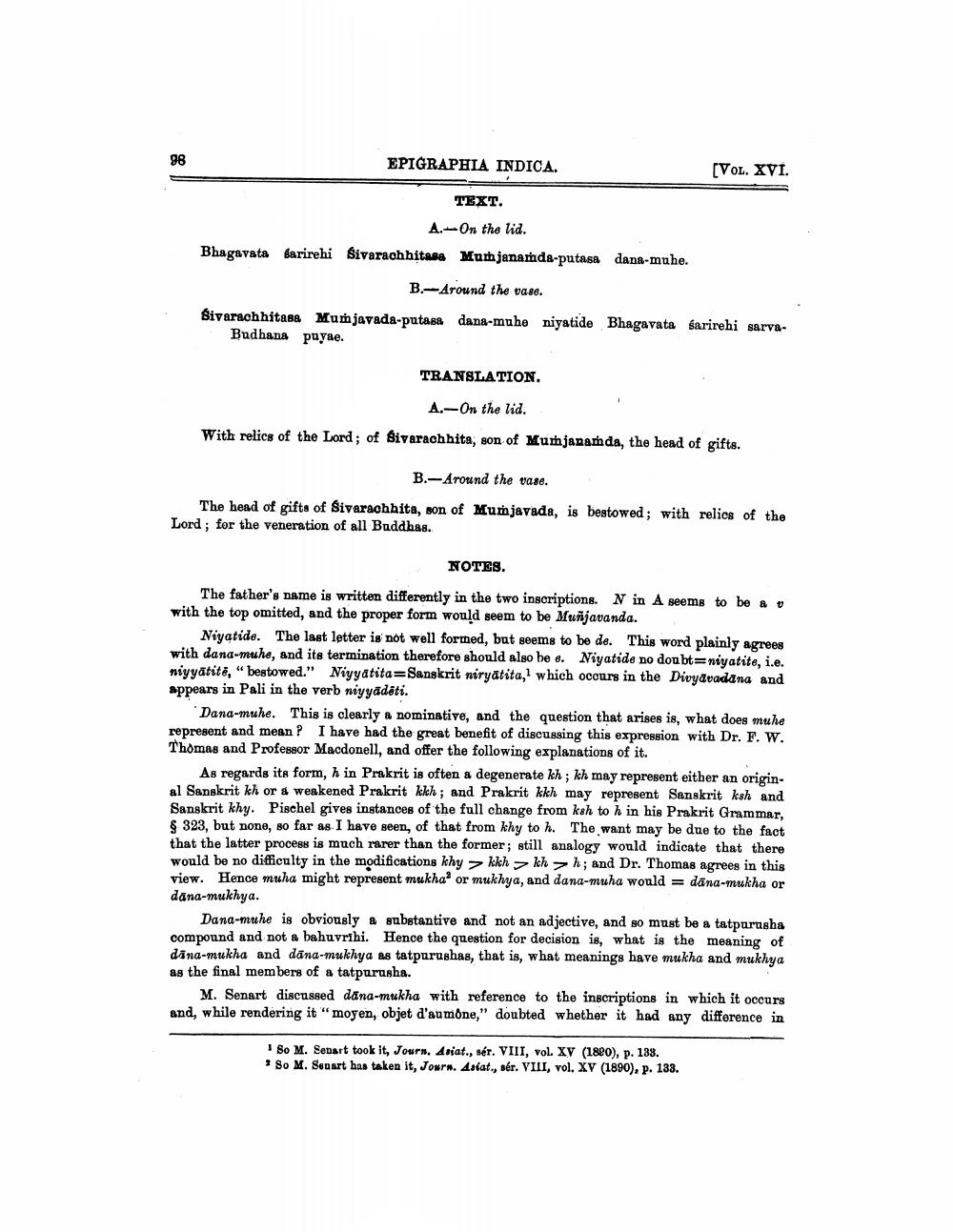________________
EPIGRAPHIA INDICA.
(VOL. XVI.
TEXT.
A.-On the lid. Bhagavata sarirehi Sivarach hitasa Mumjanamda-putasa dana-muhe.
B.-Around the vase. Sivarachhitass Mum javada-putasa dana-muhe niyatide Bhagavata sarirehi sarva
Budhana payae.
TRANSLATION.
A.-On the lid. With relics of the Lord; of Sivarachhita, son of Mumjanam da, the head of gifts.
B.-Around the vase.
The head of gifts of Sivarachhita, son of Murjavada, is bestowed; with relics of the Lord; for the veneration of all Buddhas.
NOTES.
The father's name is written differently in the two inscriptions. N in A seems to be a v with the top omitted, and the proper form would seem to be Muñjavanda.
Niyatide. The last letter is not well formed, but seems to be de. This word plainly agrees with dana-muhe, and its termination therefore should also be e. Niyatide no doubt=niyatite, i.e. niyyātitë," bestowed." Niyyatita=Sanskrit niryatita, which occurs in the Divyavadana and appears in Pali in the verb niyyādēti.
Dana-muhe. This is clearly a nominative, and the question that arises is, what does muhe represent and mean I have had the great benefit of discussing this expression with Dr. F. W. Thomas and Professor Macdonell, and offer the following explanations of it.
As regards its form, h in Prakrit is often a degenerate kh; kh may represent either an original Sanskrit kh or a weakened Prakrit kkh ; and Prakrit kkh may represent Sanskrit ksh and Sanskrit khy. Pischel gives instances of the full change from ksh to h in his Prakrit Grammar, $ 323, but none, so far as I have seen, of that from khy to h. The want may be due to the fact that the latter process is much rarer than the former; still analogy would indicate that there would be no difficulty in the modifications khy zkkh kh zh; and Dr. Thomas agrees in this view. Hence muha might represent mukhaor mukhya, and dana-muha would = dana-mukha or dana-mukhya.
Dana-muhe is obviously & substantive and not an adjective, and so must be a tatpurusha compound and not a bahuvrihi. Hence the question for decision is, what is the meaning of dina-mukha and däna-mukhya as tatpurushas, that is, what meanings have mukha and mukhya as the final members of a tatpurusha.
M. Senart discussed dana-mukha with reference to the inscriptions in which it occurs and, while rendering it "moyen, objet d'aumône," doubted whether it had any difference in
180 M. Senart took it, Journ, Asiat., sér. VIII, vol. XV (1880), p. 138.
So M. Senart has taken it, Journ. Asiat., sér. VIII, vol. XV (1890), p. 138.




